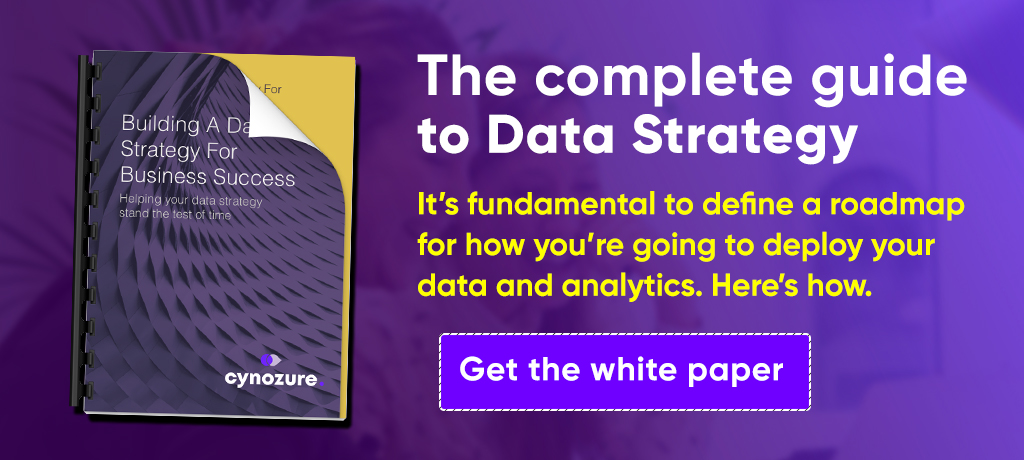Intro
Your data strategy is fundamental. These data strategy pillars help to create a flexible, agile plan for your ambitions. Overall, this strategy defines what you want to achieve, how you’re going to reach these goals, and why you’re investing in data and analytics.
Almost 40% of CEOs plan to invest in data over the next three years, with 70% expecting this investment to have a large impact on their bottom line. It’s important to understand why you need a data strategy, and how to create one that’s tailored to your business ambitions.
6 Data Strategy Pillars.
Building a data strategy is an important first step in moving the agenda forward, providing you with a framework to generate business value from data and analytics. In fact, many leaders are recognising that a business strategy isn’t complete without a data strategy.
Any effective roadmap can be drilled down into the following six data strategy pillars. Jason Foster expands more on each of these pillars in this 4-minute video:
Video | How to Build a Data Roadmap.
1. Vision and value
To begin with, the first data strategy pillar is all about aligning your data initiatives with a business outcomes.
Your data and analytics should focus on solving real business use cases, so that the rest of the data strategy is tailored to what you need.
2. People and skills
There is a clear set of capabilities needed in your data team. On the one hand, you need architects that can technically sort the data and analytics, and support your platform.
On a higher level, you also need someone to drive business change, and take responsibility for your data. This is where many organisations are starting to recruit their own Chief Data Officer (CDO).
3. Operating model
Once you’ve built the dream data team, how do you organise those people and skills in the right way? Some organisations keep a central team of architects and data translators.
Others prefer to distribute their data around the organisation, or find a hybrid of both approaches. Likewise, you need to set out your methodologies to make these teams agile, responsive, and innovative.
4. Data governance
How do you drive trust in the insight from your data? Data governance is key among these six data strategy pillars, as it defines how you will keep your data secured and managed.
These practices are more important than ever, considering recent news around personal data, GDPR and the ICO watchdog.
5. Technology and architecture
This next data strategy pillar encompasses the platform you intend to deploy. Crucially, this also sets out how you will push insights out to the wider organisation.
Often, this covers technology including data ingestion, pipelines, modelling, visualisation, machine learning, and more components of your data platform.
6. Roadmap
Finally, the roadmap ties all this together in a time horizon. This step defines how you want to deploy your data, and when you want to reach your targets by.
In turn, you can use this roadmap for reviewing your progress, and looking ahead on your concrete plan.
It’s important to establish the fundamentals of how to create a data strategy early on. These six pillars form the core of your approach to data; your vision and value, people and culture, operating models, data governance, technology and architecture, and your roadmap.
If you can nail each of these six pillars, your data will have the best possible foundation to generate business value from analytics insights. From there, you can download our Data Strategy white paper for a more comprehensive look how to build and deliver your own strategy.

Interested in Data Strategy? Our 'Data Strategy' white paper explains everything you need to know about delivering data and analytics for a business, including proven frameworks and methodologies for success.
White Paper: Build a Data Strategy







